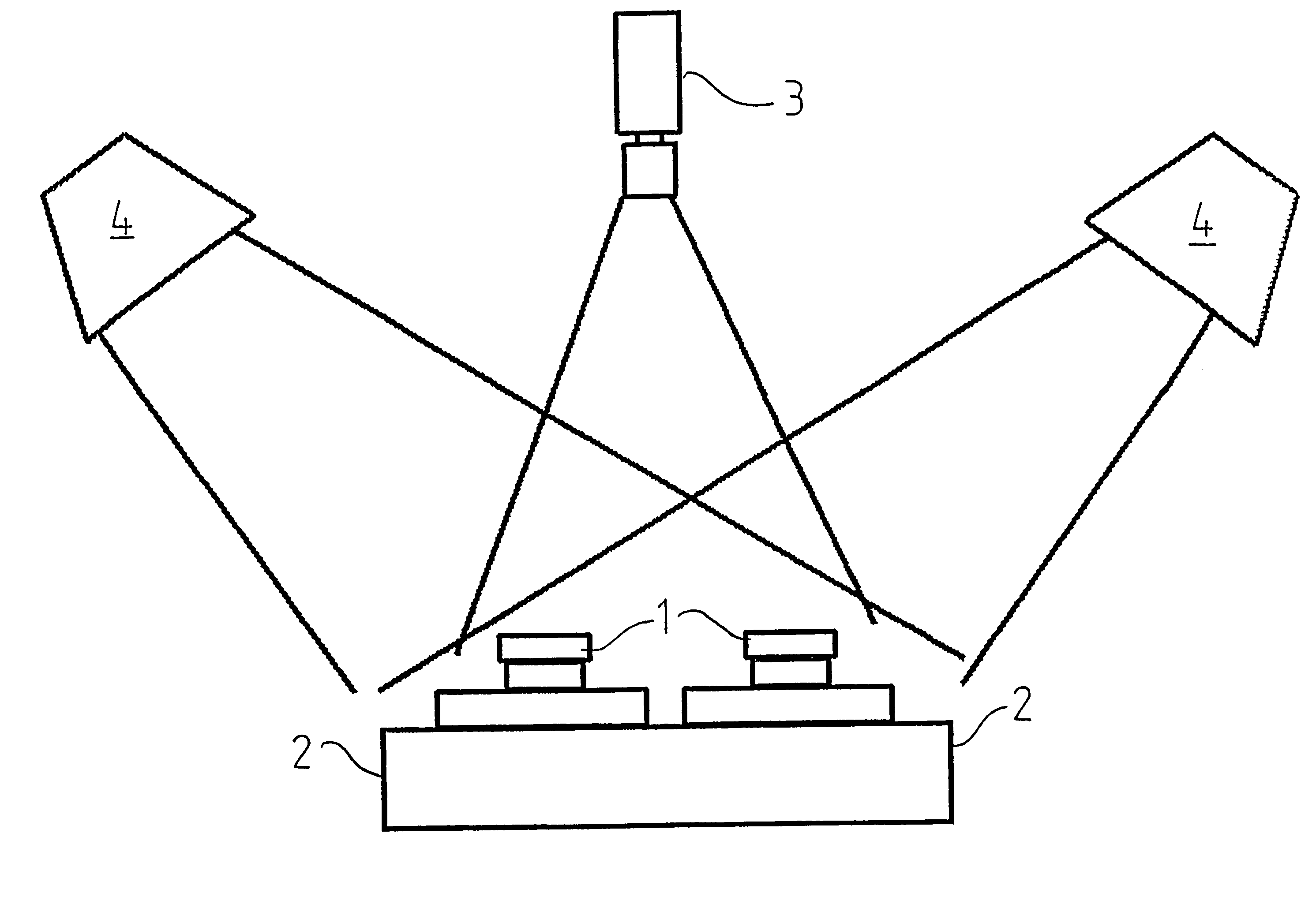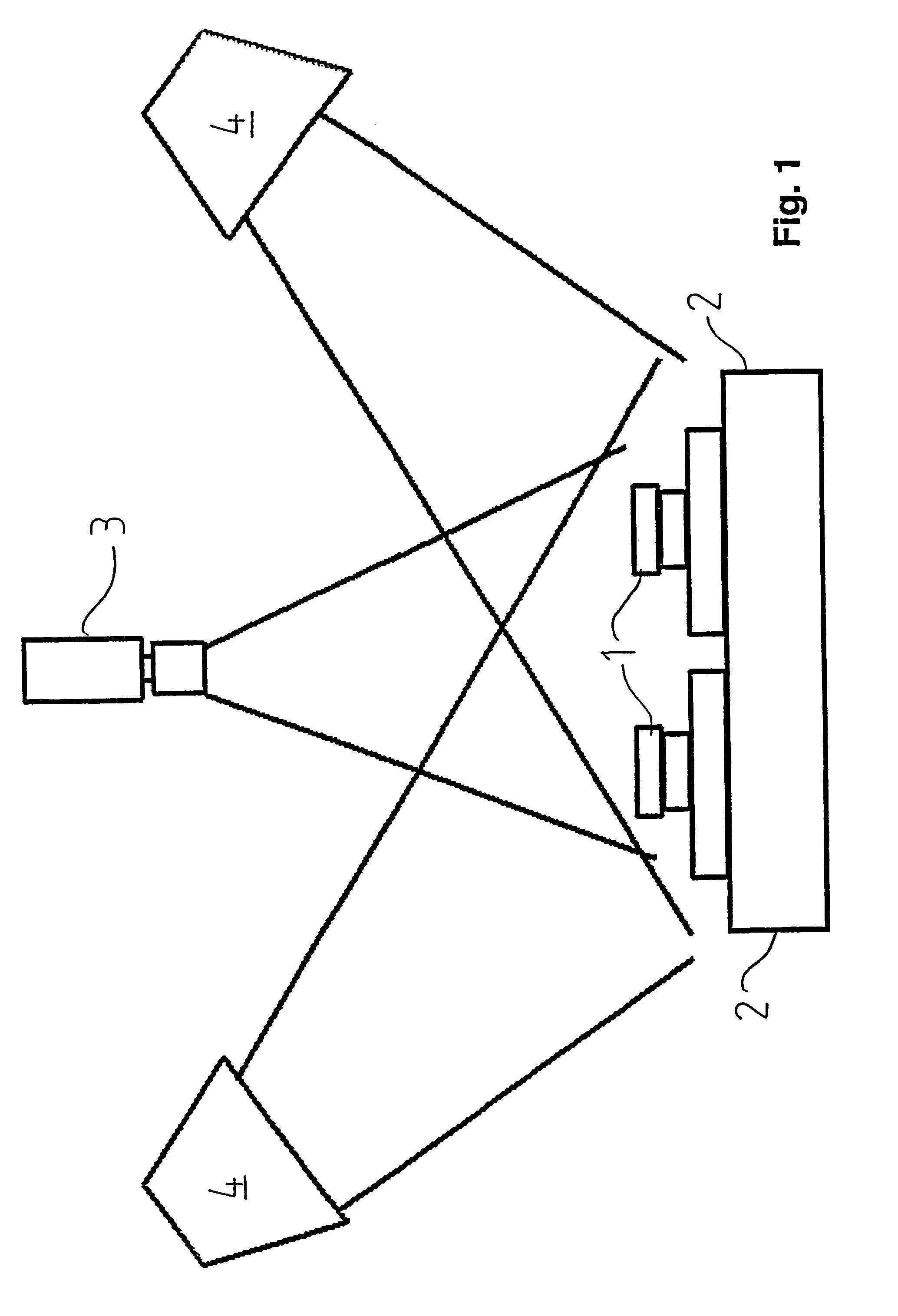Method and apparatus for quality control in the manufacture of foundry cores or core packets
a technology of quality control and foundry cores, applied in the field of object recognition, can solve the problems of not being able to detect defects, not only in the immediate vicinity of the shooting device, damage to mold parts and/or tools, etc., and achieve the effect of avoiding damage to the camera or its sensitive lens
- Summary
- Abstract
- Description
- Claims
- Application Information
AI Technical Summary
Benefits of technology
Problems solved by technology
Method used
Image
Examples
Embodiment Construction
[0035]The embodiment shown in FIG. 1 is an apparatus for detecting defects on shot cores 1. In the illustration, two cores 1 are placed on a base 2, which may be a pallet for transportation.
[0036]The apparatus comprises a camera 3 and two light sources 4, which illuminate cores 1 from different directions or angles, so that the camera 3 detects not only cores 1 in accordance with their contours, but also shadows caused by light sources 4.
[0037]As shown in FIG. 2, the camera 3 and light sources 4 are used for recording the images of core 1. In this connection, the camera 3 and likewise the light source 4 may be controlled via a processor. Specifically, in the illustrated embodiment, a PC 5 is provided, which receives images 7 that are taken by camera 3. The embodiment shown in FIG. 2 further includes a process control by means of a stored program control (SPC) 6. The stored program control (SPC) 6 communicates with PC 5, i.e., it transmits process signals and result signals 8.
[0038]I...
PUM
| Property | Measurement | Unit |
|---|---|---|
| area | aaaaa | aaaaa |
| color differentiation | aaaaa | aaaaa |
| metallic | aaaaa | aaaaa |
Abstract
Description
Claims
Application Information
 Login to View More
Login to View More - R&D
- Intellectual Property
- Life Sciences
- Materials
- Tech Scout
- Unparalleled Data Quality
- Higher Quality Content
- 60% Fewer Hallucinations
Browse by: Latest US Patents, China's latest patents, Technical Efficacy Thesaurus, Application Domain, Technology Topic, Popular Technical Reports.
© 2025 PatSnap. All rights reserved.Legal|Privacy policy|Modern Slavery Act Transparency Statement|Sitemap|About US| Contact US: help@patsnap.com



